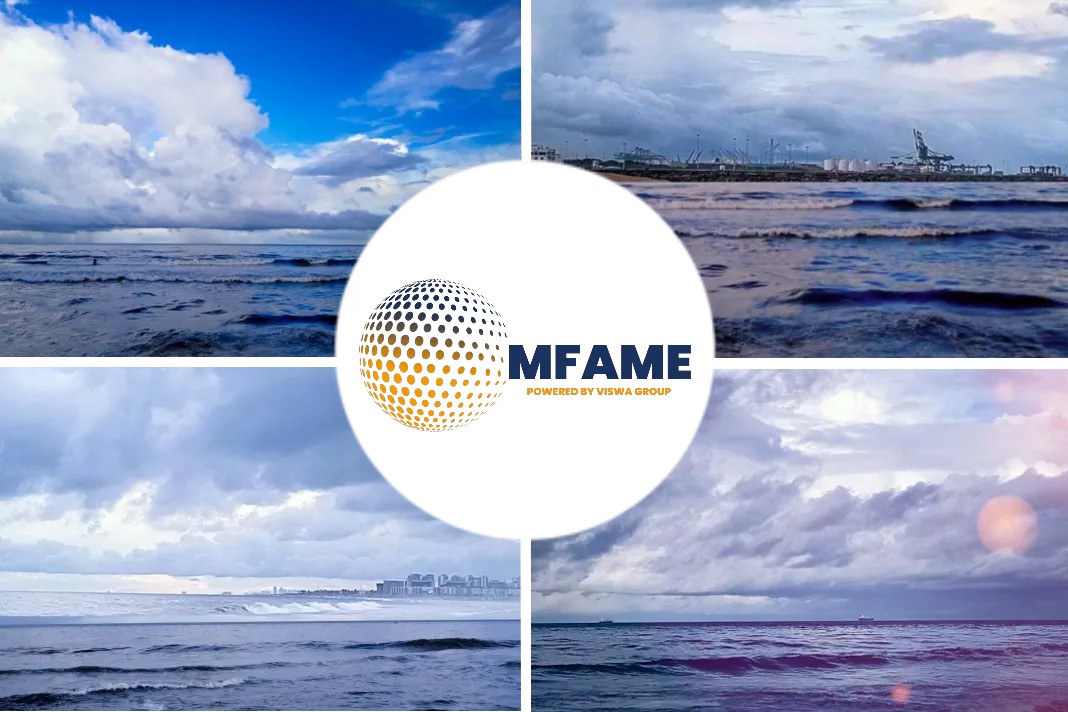- Material selection plays an important role in determining the reliability and lifetime of a UV BWTS.
- The corrosion resistance to localised corrosion in seawater systems increases with increasing content of chromium, molybdenum and nitrogen in the steel.
- Ballast water filters are the first equipment in the BWTS in contact with untreated seawater.
Ballast water treatment systems (BWTS) demand high-performance materials, explains Outokumpu lead technical manager Mia Liimatainen, says an article published on Riviera website.
Material selection plays an important role
Material selection plays an important role in determining the reliability and lifetime of a UV BWTS, which should last the life of the vessel between refits – typically 20 years or longer. Premature failures in the system cause unwanted downtime, expensive maintenance work and the need for replacement parts.
Components of these systems are currently manufactured from various materials, including different stainless steel grades and copper alloys.
Seawater is a neutral chloride solution with a chloride level between 18,000 to 30,000 ppm. At the moderate temperatures existing in most seawater systems, crevice and pitting corrosion are the most common corrosion mechanisms of concern for stainless steel. Once initiated, pitting and crevice corrosion can lead to a rapid failure.
The corrosion resistance to localised corrosion in seawater systems increases with increasing content of chromium, molybdenum and nitrogen in the steel. The corrosion resistance of various stainless steels in seawater can be ranked by pitting resistance equivalent (PRE), an empirical calculated value.
PRE = % Cr + 3.3 x % Mo + 16 x % N
The measured value critical pitting temperature (CPT) can also be used to compare the resistance of various stainless steel grades in seawater. Higher CPT and PRE values refer to higher corrosion resistance.
Standard austenitic grades such as 316L are used commonly in various industries. However, practical experience and numerous corrosion tests have shown they are prone to localised corrosion in seawater.
Ultra 254 SMO and Forta SDX 2507 are well established in seawater applications where they have shown excellent resistance to localised corrosion. If they are used to manufacture the parts of the UV BWTS exposed to seawater they are expected to last for the lifetime of the vessel.
Ballast water filters
Ballast water filters are the first equipment in the BWTS in contact with untreated seawater. The objective of the filter is to remove the sediments and solid particles, and thus ensure successful treatment in the following stage.
For successful ballast water filtration and to minimise the need for expensive replacements, it is essential to select suitable material solutions for the filter. The filter is exposed throughout the treatment process to flowing seawater.
In filters, both corrosion and wear resistance are required. Therefore, Forta SDX 2507 is an excellent choice. Less corrosion-resistant grades, such as 316L, will likely suffer from corrosion and lead to premature replacements.
The filtered ballast water flows through the UV reactor to be disinfected. As the UV chamber is exposed to flowing seawater throughout the treatment process, highly corrosion resistant grades are required. High-performance stainless steel, such as Ultra 254 SMO and Forta SDX 2507, offer excellent performance in UV chambers.
In the same way as filters, less corrosion-resistant grades, such as 316L, will likely suffer from corrosion and lead to maintenance work.
Key reasons to use stainless steels in UV BWTS
There are four key reasons to use high-performance stainless steels in UV BWTS:
- Excellent performance in seawater: high-performance stainless steels such as Ultra 254 SMO and Forta SDX 2507 offer a well proven and excellent corrosion resistance.
- Long lifetime with minimal maintenance: thanks to the excellent corrosion resistance, costly replacements can be avoided by using high-performance stainless steels. This will have a significant influence on the total lifecycle costs of the system.
- Stainless steel is 100% recyclable. Outokumpu is the world leader of using recycled material in its production of stainless steel, with an average of over 90% of recycled content. Currently, Outokumpu also has the lowest carbon footprint in the global stainless steel industry. Using the correct high-performance stainless steel for BWTS applications contributes to sustainability as the system lasts longer, with no need for regular replacement of components that consume both energy and resources.
- Outokumpu has wide experience and knowledge of the suitability of stainless steel grades in different corrosive environments. Outokumpu can perform laboratory scale or field corrosion testing to support the selection of material solutions. It can also call on experience in similar marine applications such as scrubbers.
Did you subscribe to our daily newsletter?
It’s Free! Click here to Subscribe!
Source: Riviera



















